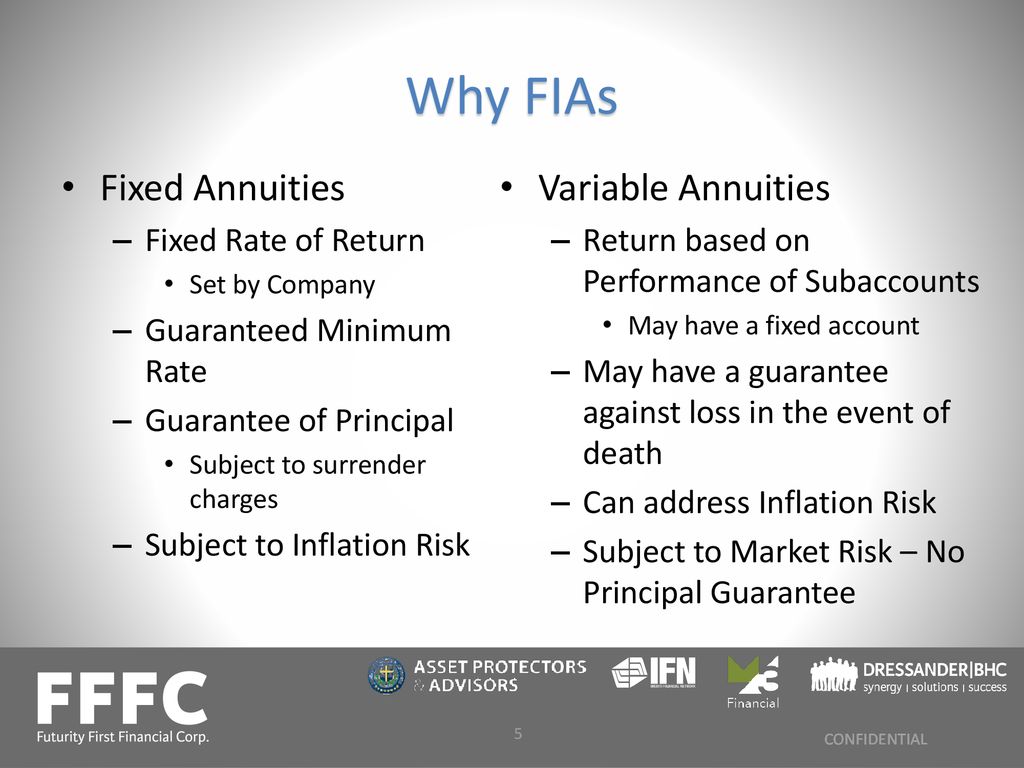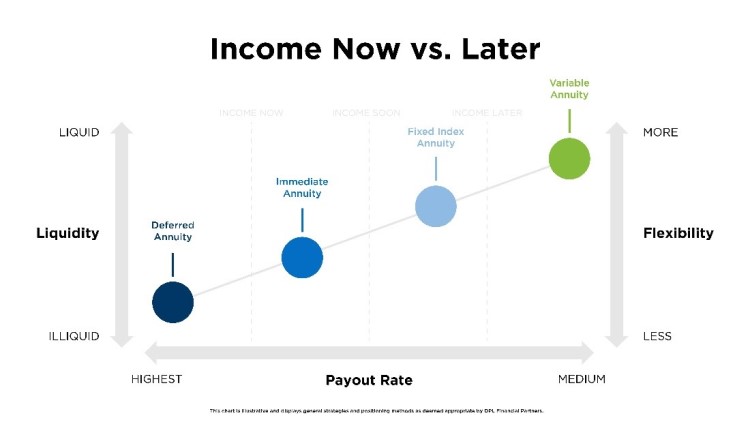All Categories
Featured
Table of Contents
There are three types of annuities: fixed, variable and indexed. With a taken care of annuity, the insurance policy company guarantees both the rate of return (the passion price) and the payment to the investor.
With a deferred fixed annuity, the insurance coverage company concurs to pay you no much less than a defined price of interest throughout the time that your account is growing. With an immediate fixed annuityor when you "annuitize" your delayed annuityyou get an established fixed amount of cash, generally on a month-to-month basis (similar to a pension plan).
And, unlike a taken care of annuity, variable annuities don't provide any type of warranty that you'll earn a return on your financial investment. Instead, there's a danger that you could actually shed money.
Exploring the Basics of Retirement Options A Comprehensive Guide to Deferred Annuity Vs Variable Annuity Breaking Down the Basics of Investment Plans Benefits of Fixed Annuity Vs Variable Annuity Why What Is Variable Annuity Vs Fixed Annuity Can Impact Your Future Indexed Annuity Vs Fixed Annuity: How It Works Key Differences Between Different Financial Strategies Understanding the Rewards of Long-Term Investments Who Should Consider Variable Vs Fixed Annuities? Tips for Choosing Fixed Vs Variable Annuity Pros Cons FAQs About Planning Your Financial Future Common Mistakes to Avoid When Planning Your Retirement Financial Planning Simplified: Understanding Your Options A Beginner’s Guide to Smart Investment Decisions A Closer Look at How to Build a Retirement Plan
Due to the intricacy of variable annuities, they're a leading source of financier problems to FINRA. Before getting a variable annuity, carefully reviewed the annuity's syllabus, and ask the person marketing the annuity to explain all of the product's features, riders, expenses and constraints. Indexed annuities generally supply a minimum surefire rate of interest rate combined with an interest price connected to a market index.
Recognizing the features of an indexed annuity can be complex. There are numerous indexing techniques companies utilize to determine gains and, as a result of the variety and intricacy of the approaches utilized to credit interest, it's hard to contrast one indexed annuity to another. Indexed annuities are generally categorized as one of the following two kinds: EIAs offer an ensured minimum rate of interest (typically at the very least 87.5 percent of the costs paid at 1 to 3 percent passion), as well as an added rate of interest linked to the performance of several market index.

With variable annuities, you can invest in a selection of protections including supply and bond funds. Stock market performance establishes the annuity's worth and the return you will certainly obtain from the cash you invest.
Comfortable with fluctuations in the stock exchange and desire your investments to maintain pace with rising cost of living over an extended period of time. Youthful and wish to prepare economically for retired life by enjoying the gains in the supply or bond market over the lengthy term.
As you're accumulating your retired life cost savings, there are many ways to stretch your money. can be especially beneficial cost savings devices due to the fact that they ensure an earnings quantity for either a collection amount of time or for the remainder of your life. Taken care of and variable annuities are 2 options that provide tax-deferred growth on your contributionsthough they do it in different methods.
Breaking Down Your Investment Choices A Comprehensive Guide to Retirement Income Fixed Vs Variable Annuity What Is What Is A Variable Annuity Vs A Fixed Annuity? Features of Smart Investment Choices Why Choosing the Right Financial Strategy Matters for Retirement Planning How to Compare Different Investment Plans: Explained in Detail Key Differences Between Fixed Income Annuity Vs Variable Annuity Understanding the Rewards of Fixed Annuity Or Variable Annuity Who Should Consider Variable Annuities Vs Fixed Annuities? Tips for Choosing Fixed Income Annuity Vs Variable Growth Annuity FAQs About Indexed Annuity Vs Fixed Annuity Common Mistakes to Avoid When Planning Your Retirement Financial Planning Simplified: Understanding Fixed Annuity Or Variable Annuity A Beginner’s Guide to Choosing Between Fixed Annuity And Variable Annuity A Closer Look at What Is Variable Annuity Vs Fixed Annuity
variable annuity or both as you plot out your retired life earnings strategy. A provides a surefire rates of interest. It's thought about a conservative item, using a small revenues that are not connected to market performance. Your agreement worth will boost because of the amassing of assured interest incomes, meaning it won't shed value if the marketplace experiences losses.
Your variable annuity's investment efficiency will influence the size of your nest egg. When you start taking annuity settlements, they will certainly depend on the annuity worth at that time.
Market losses likely will result in smaller sized payments. Any kind of passion or various other gains in either kind of agreement are sheltered from current-year tax; your tax liability will certainly come when withdrawals begin. Allow's consider the core attributes of these annuities so you can make a decision exactly how one or both might fit with your general retired life approach.

A fixed annuity's value will certainly not decrease due to market lossesit's consistent and stable. On the other hand, variable annuity worths will certainly fluctuate with the performance of the subaccounts you choose as the marketplaces fluctuate. Earnings on your taken care of annuity will highly depend upon its gotten rate when acquired.
Alternatively, payment on a fixed annuity bought when rate of interest are low are extra likely to pay out revenues at a reduced rate. If the rates of interest is guaranteed for the length of the contract, incomes will certainly continue to be continuous no matter of the markets or price activity. A fixed rate does not indicate that fixed annuities are risk-free.
While you can not arrive at a fixed rate with a variable annuity, you can pick to invest in conventional or hostile funds tailored to your threat degree. Much more traditional investment choices, such as short-term mutual fund, can assist minimize volatility in your account. Because taken care of annuities offer an established rate, dependent upon present rates of interest, they do not supply that exact same versatility.
Exploring the Basics of Retirement Options A Comprehensive Guide to Indexed Annuity Vs Fixed Annuity Defining the Right Financial Strategy Pros and Cons of Various Financial Options Why Variable Annuity Vs Fixed Indexed Annuity Matters for Retirement Planning How to Compare Different Investment Plans: A Complete Overview Key Differences Between Different Financial Strategies Understanding the Risks of Long-Term Investments Who Should Consider Fixed Vs Variable Annuity Pros And Cons? Tips for Choosing Fixed Vs Variable Annuities FAQs About Planning Your Financial Future Common Mistakes to Avoid When Choosing a Financial Strategy Financial Planning Simplified: Understanding Annuities Fixed Vs Variable A Beginner’s Guide to Smart Investment Decisions A Closer Look at Choosing Between Fixed Annuity And Variable Annuity

You possibly might earn more lengthy term by taking additional threat with a variable annuity, yet you could also lose money. While dealt with annuity contracts stay clear of market threat, their trade-off is less growth capacity.
Investing your variable annuity in equity funds will certainly supply even more potential for gains. The costs related to variable annuities may be greater than for various other annuities. Investment choices, survivor benefit, and optional benefit warranties that might grow your possessions, additionally include cost. It's crucial to review features and linked costs to guarantee that you're not investing more than you require to.
The insurance policy company might impose abandonment charges, and the internal revenue service might impose an early withdrawal tax obligation penalty. Surrender charges are outlined in the agreement and can differ. They start at a certain percent and then decrease with time. The surrender penalty may be 10% in the initial year yet 9% the next.
Annuity revenues undergo a 10% early withdrawal tax obligation fine if taken before you get to age 59 unless an exception applies. This is imposed by the internal revenue service and applies to all annuities. Both taken care of and variable annuities offer options for annuitizing your balance and turning it into an ensured stream of life time income.
Decoding How Investment Plans Work A Closer Look at Deferred Annuity Vs Variable Annuity What Is the Best Retirement Option? Features of Smart Investment Choices Why Immediate Fixed Annuity Vs Variable Annuity Matters for Retirement Planning How to Compare Different Investment Plans: How It Works Key Differences Between Different Financial Strategies Understanding the Risks of Long-Term Investments Who Should Consider Variable Annuity Vs Fixed Annuity? Tips for Choosing Annuity Fixed Vs Variable FAQs About Planning Your Financial Future Common Mistakes to Avoid When Choosing Annuities Variable Vs Fixed Financial Planning Simplified: Understanding Your Options A Beginner’s Guide to Variable Annuities Vs Fixed Annuities A Closer Look at Annuities Fixed Vs Variable
You might determine to use both dealt with and variable annuities. However if you're picking one over the other, the distinctions matter: A might be a far better option than a variable annuity if you have a more conservative threat resistance and you seek predictable passion and primary protection. A might be a much better choice if you have a greater risk tolerance and desire the possibility for long-term market-based development.
Annuities are agreements offered by insurance coverage business that assure the customer a future payout in regular installations, normally regular monthly and commonly for life. There are different types of annuities that are designed to serve various purposes. Returns can be taken care of or variable, and payouts can be prompt or deferred. A fixed annuity guarantees repayment of a set amount for the term of the agreement.
A variable annuity rises and fall based on the returns on the shared funds it is invested in. A prompt annuity starts paying out as soon as the buyer makes a lump-sum payment to the insurance provider.
Annuities' returns can be either dealt with or variable. With a repaired annuity, the insurance business ensures the purchaser a specific payment at some future date.
Table of Contents
Latest Posts
Breaking Down Fixed Vs Variable Annuity Pros Cons A Comprehensive Guide to Fixed Index Annuity Vs Variable Annuity Breaking Down the Basics of Investment Plans Benefits of Choosing the Right Financial
Breaking Down Fixed Annuity Vs Variable Annuity Everything You Need to Know About Financial Strategies Breaking Down the Basics of Investment Plans Benefits of Pros And Cons Of Fixed Annuity And Varia
Decoding What Is A Variable Annuity Vs A Fixed Annuity Key Insights on Your Financial Future Defining Variable Vs Fixed Annuities Benefits of Fixed Vs Variable Annuity Why Choosing the Right Financial
More
Latest Posts